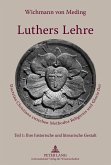After the journeys of the past years to diets and religious discussions, Melanchthon spent the year 1542 almost exclusively in Wittenberg. It was from here that he followed the diets in Speyer and Nuremberg and exchanged information with the persons with whom he corresponded. With great anxiety he observed the Turks in Hungary and Joachim of Brandenburg's military campaign against them. Many of the letters from Melanchthon's everyday life show how much influence he had; in addition to numerous letters of recommendation, his involvement in filling several vacancies for positions at schools or positions as clergymen and in founding the University of Königsberg is well documented.
»This volume is very carefully, accurately and thoughtfully worked out and a delightful step towards the completion of this imposing edition. Every scholar working on Melanchthon and his background has the pleasure to have recourse to this edition but also has to revert back to it and will be measured on the use of it as well, as the publications of this commemorative year of Melanchthon will reveal to us.« Manuela Kahle, Fast Review of Books in Renaissance Intellectual History »It is next to impossible to improve upon what has to be one of the best editions of a sixteenth-century figure ever produced.« Timothy J. Wengert, The Sixteenth Century Journal






